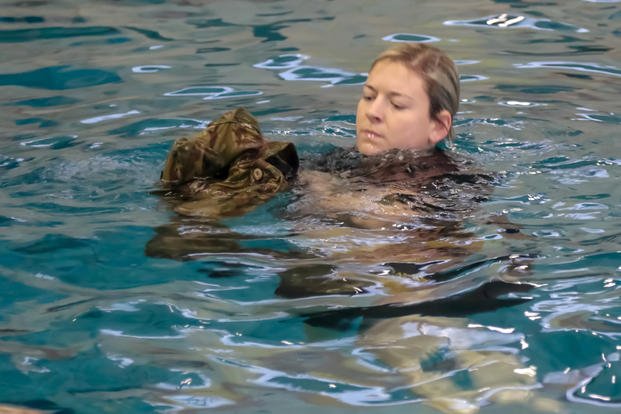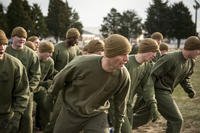Preparing for any military diving or rescue swimmer course requires a significant time investment, not only to get into swimming shape but also to learn a wide variety of skills in the water. These include efficient underwater swimming, treading water, buddy rescue, drownproofing, swimming with clothes, underwater knot-tying on breath holds and much more.
These activities are difficult at first, but once you get in a few practice sessions and overcome the initial mental challenges, they can enhance your overall water confidence. Here is a question from a future military diver who is learning how to swim better, along with the other challenges that make up special operations diving programs:
I know that the selection course has a lot of water con, i.e., bobbing, treading, and treading with weight, along with other pool-related events, and I'd like to start working on them as I improve my PST numbers. My question is, what would be the best way to incorporate water con activities in my selection prep? Thanks in advance, Travis
I add many different conditioning and technique elements to swimming workouts -- well, to be honest -- to make them less boring but also more effective in producing water confidence versus just swimming conditioning. Check out these ideas to add to swim workouts to help you prepare for various spec ops swimming programs in the future. For instance:
Warm-up with the swim test distance: Every swim workout starts with a 500-yard or 500-meter test or a 10-minute tread (no hands) as the warm-up, as these are the most common swim test distances. The goal is to one day make the swim portion of any fitness test "just a warm-up." You can only do this by swimming 500 meters as your actual warm-up each time you go swimming. Then do your workout.
Technique rest sets: Every rest set includes a drill that needs practice. For instance, rest with treading, bottom bouncing, float, knot-tying, etc. The drownproofing test events can be easily simulated as rest sets and included in your conditioning swims.
The 50-50 classic conditioning/technique workout: The 50-50 workouts are a mix of technique and conditioning (rest with tread, etc.). Do sets of conditioning by swimming freestyle (50 meters) and sets of the tested stroke (CSS, sidestroke or breaststroke) for 50 meters. Rest with treading or bobbing for one minute between 10-15 sets.
Add mobility and stretching to treading workouts: Try treading for five minutes, then hop out and stretch the connective tissue in your hips, knees and ankles to help produce a more powerful and full range-of-motion kick.
Add calisthenics to swim workout (swim PT): You need to get creative and add drills to your rest period or conditioning sets to your technique days. Here, you can work on exercises such as push-ups, flutter kicks, pull-ups (if the pool has a bar on deck) and other calisthenics between swimming sets. Swim 100-200 meters, then hop out to do 20 push-ups and 20 flutter kicks. Add water to your mask while you do the flutter kicks for extra credit. If attending any spec ops dive school, you will see this fun activity again.
See more swimming workout-related ideas:
- Preparing for Drownproofing Test Swim Workout
- Rest with Treading Skills (Between Sets)
- Treading and Stretching: Treading May Be a Mobility Issue
Want to Learn More About Military Life?
Whether you're thinking of joining the military, looking for fitness and basic training tips, or keeping up with military life and benefits, Military.com has you covered. Subscribe to Military.com to have military news, updates and resources delivered directly to your inbox.


















